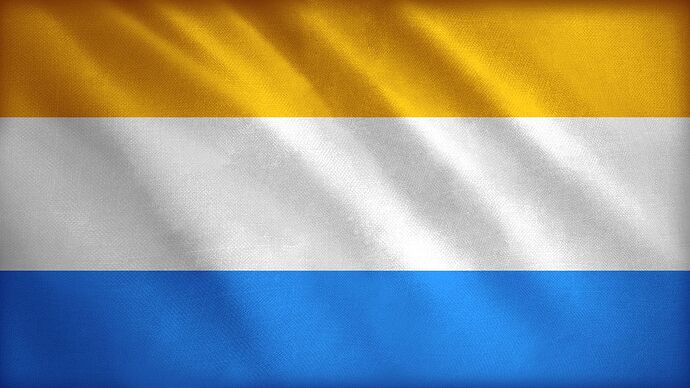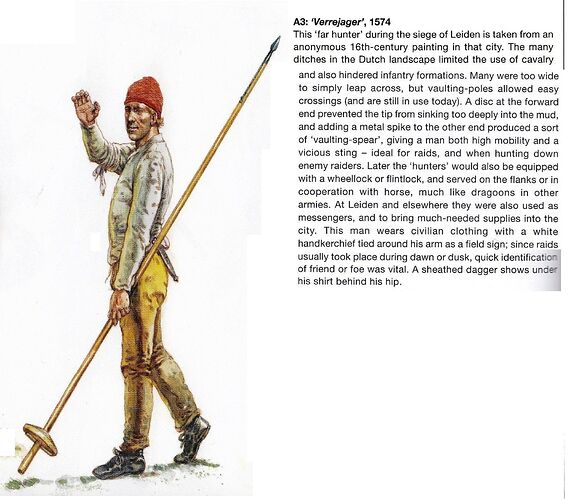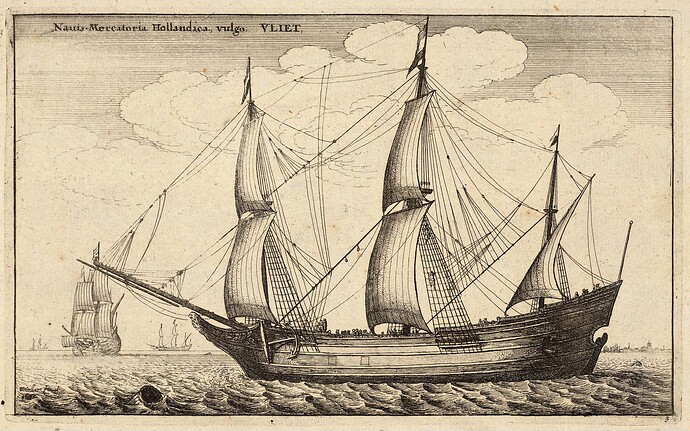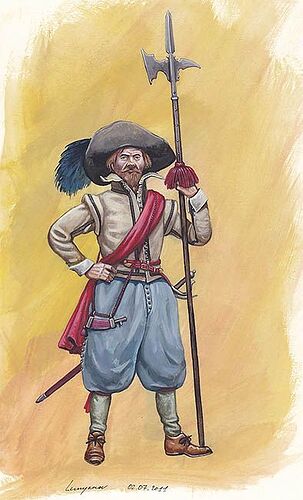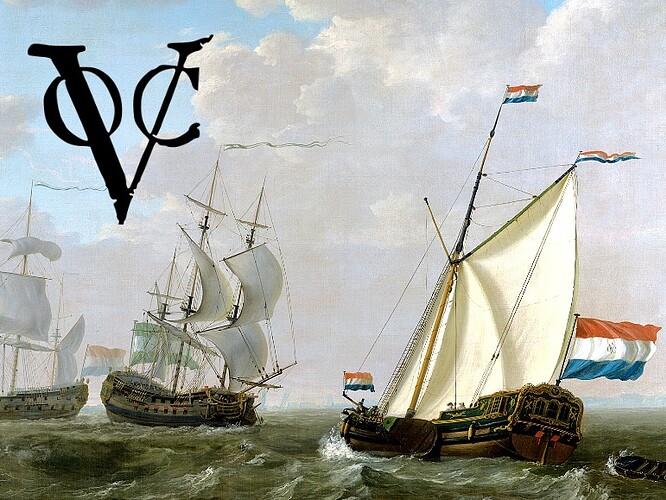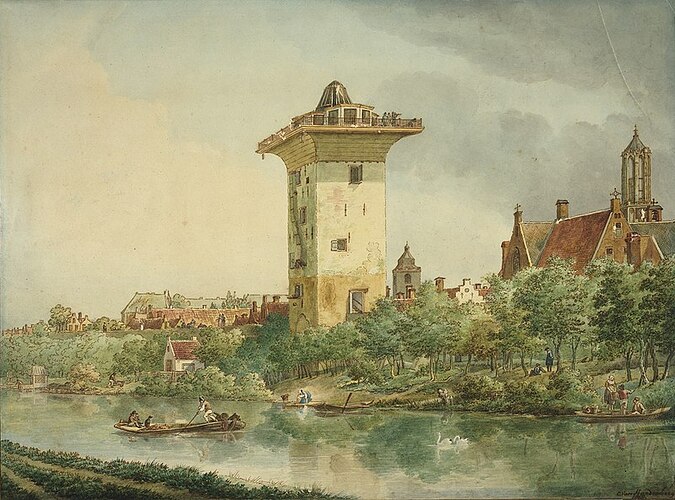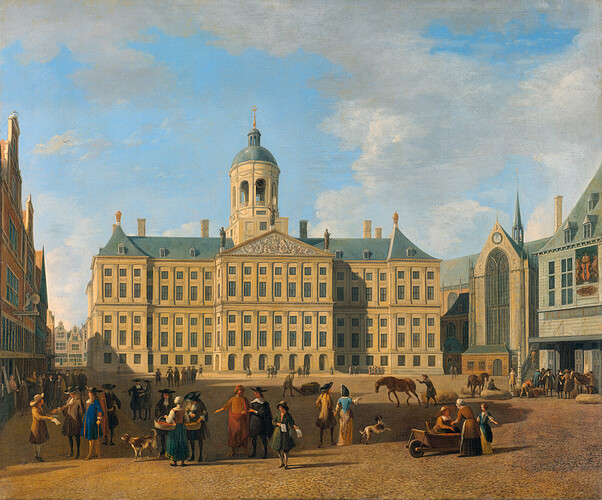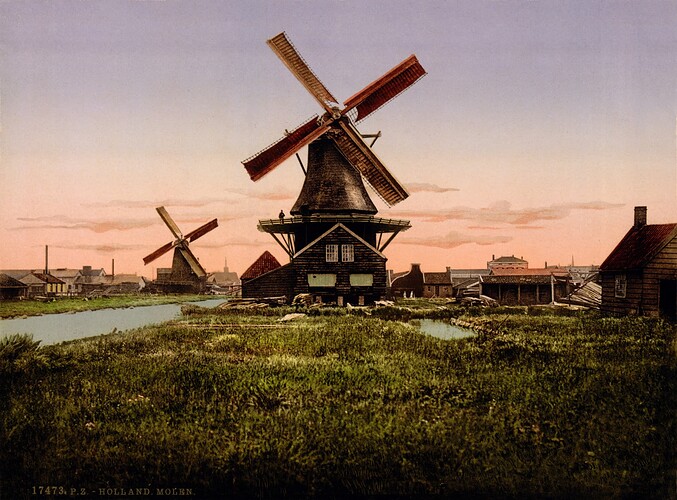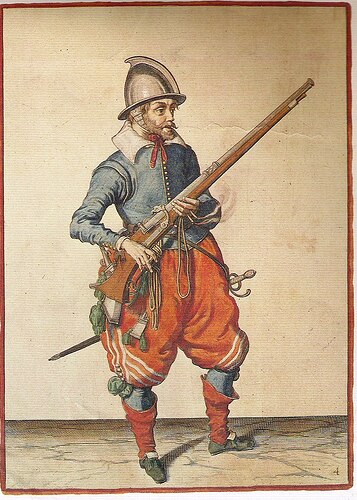After a lot of reading and eating of the good cheese. I somehow think I manage to pack 2 different Civ’s into 1. The Dutch sadly suffer the curse of Hollander-light. Heck, many people call the Netherlands for Holland! Even though Holland in itself is just a region of a once mighty mega-corporate making Cyberpunk Megacorporates look like a mouse.
And thus the history of the Frisians, were a lot of commonly thought of modern Dutch identity stems from, such as Jumping over marches, racing across beaches on wheeled yachts, and lots of tasty cheese! In all reality. The Dutch are a combination of the Frisian, Holland, and the rest of the Netherlands combined together forming a sort of prototype-USA within Europe. So I did an attempt trying to corporate this into the design.
While the Dutch identity can be a bit controversial. One has to remember that the Dutch empire took form at beginning of the 17th century. the very end of the AoE4 timespan. (712~1664)
There are a few very late era elements already in the game such as the Streltsy (1556-1720)
The Dutch have a very long history, especially if you look at the Frisians also known as the Frisii during Roman times. And while the Dutch counties were under the aligiance of the Carolingian empire of the french and the holy roman empire. While the Frisians managed to maintain their independence and completely reject Feudalism, the other Dutch states were more vassals who still retained their cultural identity with a lot of self-interest and frequently changed hands between neighboring empires and independence, a rapidly growing population and economy due to farming revolutions, setting the stepping stones for the Dutch empire that seemingly sprang into a great power from nothingness.
At least in my personal opinion, I think they are a Civ with a story well worth telling. Their medieval history often overshadowed and forgotten due to the Dutch Golden age that really kicked in during the mid 17th century and onwards.
So here it is!
The Dutch
Economy, Exchange, Navy
Difficulty: 3/3
Bonuses:
- Villagers can herd sheep.
- Villagers build walls and palisades 50% faster.
- Market exhange rate value drop reduced by 50%
- Tradeship moves 20% faster.
- Unique Building: Windmill
- Unique Building: Tulip-fields
- Unique Unit: Potestaat
- Unique Unit: Musketeer (replaces Handcannoneers)
- Unique Unit: East Indiaman (Replaces Carrack)
Beurze Purse: Is able to trade unique resources Cheese and Tulips. These have a fixed exchange rate when traded at the market. Cheese can be traded for any resource, while Tulips can only be exchanged for gold (unless you have the wisselbank). 1 Cheese trade for 10 resources, 1 Tulip trades for 100 resources.
Cultural Duality: When aging up to Feudal age, one has the choice of going county-state, which makes the Civ progress like a regular civilization. Or Reject Feudalism by going for Frisian Freedom. Granting the unique unit Potestaat that can recruit units on the field and the ability to give a boon to nearby units, as well as some unique upgrades from the Upstalboom landmark. In order to Age up into castle age, a set of buildings needs to be constructed instead in order to upgrade the Upstalboom landmark.
Unique Landmarks:
Feudal Age:
- Saint Bavo Church: Grants Kerkenkraus to nearby villagers, and the upgrade for free. Grants County-State Culture bonus.
- Upstalsboom: Grants unique upgrades. Is able to recruit Potestaad units. A unique unit that is able to recruit any non-siege units with a 100% production speed. (Gains an additional 100% production speed for each age up). Becomes Unable to produce Knights until age IV. Grants Frisian Freedom Culture Bonus*.*
Note:
County-State allows the construction of the Ridderzaal Landmark or Spaarnwouderpoort Landmark in order to age up.
Frisian Freedom allows the next Towncenter built to be an additional Landmark Towncenter. Once a Towncenter, Blacksmith, and market has been built, It will unlock the ability to age up by upgrading the Upstalboom for 400F 150G.
Country-State Castle Age:
- Ridderzaal: Reduces the gold cost of knights by 20%. Has unique upgrades.
- Smeetoren: Cost of Nearby structures upgrades and research time reduced by 50%, Towers also apply this effect. Increases towers attack range by +1 and line of sight.
Imperial Age:
- Wisselbank: Function as a market can trade Tulips for any resource (Food/Wood/Stone/Gold). Reduces cost of Tradeships and Traders by 25%. All naval units in the game gain a special ability called Insurance.
- Montelbaanstoren: Functions as a Keep with 50% greater weapon range, that can be connected with walls, Reduces cost of Stonewall towers by 65%. Allows keeps being able to produce villagers.
Note:
Insurance: When activated, it Recovers 100% Gold value if the ship is sunk. Insurance costs initially 20% of the gold value of the ship, and keeps costing 5% of its gold value every 140 seconds. Players with the Wisselbank Landmark receive the gold spent on the Insurance ability.
If there is multiple Wisselbanks, then gold income goes to the nearest Wisselbank the insured unit is located at.
Wonder: Middelburg Townhall.
Unique Buildings:
- Windmill (I, 175W): Special structure that can be Built over the existing structure, increasing their effectiveness. Can be built over Mills and Camps, increasing resource drop-off by 20%. Can be built over Docks, Blacksmiths, Siege Workshop, increasing their production and research speed by 25%
- Tulip Fields (IV, 75W): Functions as a farm, villagers drop off gold instead of food, and generate 1 Tulip resource. Tulips can be traded for more gold at the Market but reduce the gold generated from Tulip Fields all the way down to 1.
***Note:***Tulip fields can also be farmed by other players, but only Dutch can make them. Other civ’s do not gain Tulip unique resource and only gain gold from the Tulip Fields.
Unique Units:
- Potestaat(II, 100F 200G): Limited to having a maximum of 1 unit. A unit that is strong against heavy armor. Is able to recruit units out in the field and able to activate 1 of 2 types of orders: On legs standing! Grants nearby units +3 armor. And Het Marcheren! Grants infantry and siege units 25% movement speed when out of combat.
- Musketeer (IV, 100F 140G): Gunpowder unit that moves faster and does more damage than a regular hand cannoneer. Is able to use unique formation: Counter March when unlocked.
- East Indiaman (IV, 480W, 300G): Weaker in firepower compared to its contemporaries, it makes up in flexibility and speed. Is able to be used as a trade ship, but can also be deployed at coastal shores or shallows, being able to produce any military non-siege units. But unable to fire its guns.
Technology:
-
Cheese (I, 50W):
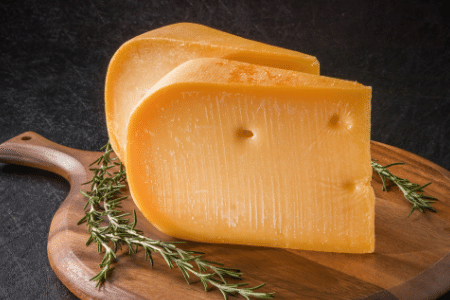
Cattle/Sheep produce cheese when harvested. Cheese can be traded in Marked for Gold or Food. Upgraded at Windmill.
-
Livestock Breeding (I, 50F 25G): Cattle/Sheep is produced from mills for every 375 resources dropped off at Mill.
-
Frisian Arms (II, 50W 100G): Villagers gain +3 damage and are affected by Blacksmith upgrades. Upgraded at Upstalsboom
-
Frisian Spears (II, 100W 100G):
Spearmen have 15% increased movement speed. -
Windmill workshops (II, 200W 200G): Villagers within windmill influence have 50% increased construction speed. Upgraded at Blacksmith.
-
Kerkenkraus(III, 100W, 250G): Monasteries grant nearby villagers Healing over time and a permanent 25 extra health. Upgraded at Monastery
-
Fluyt (IV, 250W 100G):
Reduces the cost of Tradeships by 30%, and increases their health by 100. -
Halberd (III, 150W 250G):
Spearmen gain +5 bonus damage against heavy armor. Upgraded at Upstalsboom. -
Frisian Horses (III, 200F 300G):
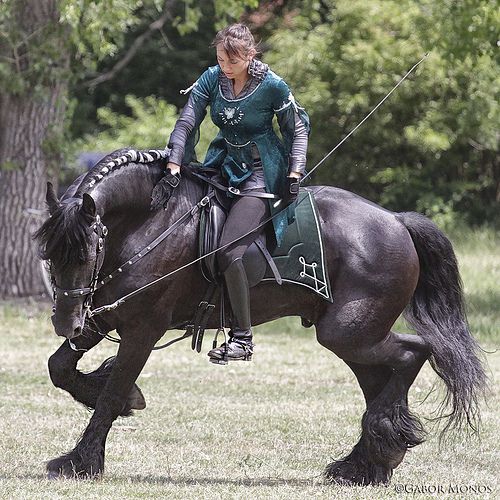
Cavalry units gain 15% more health. Upgraded at Upstalboom -
Goedendag (III, 100W 200G):
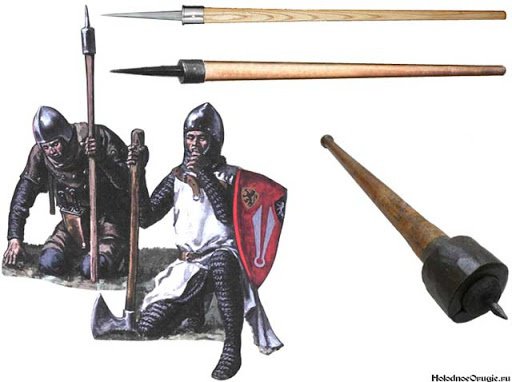
Men at Arms gains +3 damage against Cavalry and Heavy armor. Upgraded at Ridderzaal -
Schutterij (III, 400F 100G): When Garrisoning villagers in a Towncenter or keep, an equal amount of crossbowmen will be ungarrisoned. Has a 12-minute cooldown. Upgraded at Ridderzaal
-
Cloverniers (IV, 400F 1000G): If Schutterij has been researched, it only cost gold to research. When Villagers garrison in a Towncenter or Keep, an equal amount of Musketeers will be ungarrisoned. Replacing the crossbowmen from Schutterij. Has a 12-minute cooldown. Upgraded at Ridderzaal
-
Vereenigde Oostindische Compagnie (IV, 500F 500G):
Indiamen can now produce villagers when deployed.
- Counter March (IV 300F 700G): Allows for Counter March formation on Musketeers, increasing their fire rate by 25% when the formation is active.
- Stadtholder (IV 1000G): Can recruit Potestaat unique unit from Towncenter.
Additional Notes:
Architecture before the establishment of the Republic of the United Provinces (1579), art and architecture reflect the historical events and influences to which the Netherlands was subject. In the Romanesque age, in Maastricht, dependent on the bishopric of Liège, architecture was linked to the Mosan forms; in various buildings with a central plan (Nijmegen chapel, 11th century) the influence of the palatine chapel of Aachen persists. Lombard influences (secondary transepts intersected with the central nave) are found, among other things, in Our Lady in Maastricht and in S. Maria in Utrecht. Between the end of the 13th century. and the beginning of the 14th, the Gothic had a particular imprint in Brabant (cathedral of s’Hertogenbosch) and along the Rhine (churches of Nijmegen, Arnhem); powerful bell towers were built in Dordrecht, Utrecht, Amersfoort. The ornamental use of brick is interesting in Groningen and neighboring regions. In the 16th century. Gothic forms continued to characterize religious and civil architecture (Pesa di Deventer, 1528) but, also due to the presence of Italians (T. Vincidor, A. Pasqualini), Renaissance motifs were introduced (Castle of Enrico di Nassau in Breda, bell tower by Ijselstein).
So their architectural forms would start off quite similar to the other European Civs, turning more romanesque and gothic in the feudal and castle age change. While early elements of the more famous Dutch Baroque architecture and more urban buildings will be seen in the Imperial age.
Naval units: The Dutch naval units will be very interesting. They would have Archer ships in form of Galleys as contemporary among the European Civs at the time, however, their Attackships would be Baghlahs! as the Dutch were quite fond of these, and during their early and first steps into naval expansions were done with these ships. Widely used for merchant ships at the time, especially in the Indian Ocean and the Arabian seas were acquired from the Mughal Empire.
The Dutch naval engineering really got its start during the mid 16th century, creating ships such as their more famous Fluyt ships, being distinguishable from the standard Cogs of other civs with the upgrade unlocked.And also started investing heavily into what got commonly known as Indiaman. The Workhorse of all the colonial empires, but something the VOC (Dutch East Indies) went big on.
Although the naming Indiaman was often referred to as Any trade ships of that went to the East Indies for the spice trade.
Language progression: Language of the Dutch in this case will be very interesting. They will start off in the dark age the same, actually, it is the sister language to old English. Anglo-Frisian language in the dark age should sound very similar to the English dark-age language. In the Feudal Age, that’s where the Dutch will be unique depending on what landmark is chosen, the Language starts diverting. Into Old-Frisian and Old-Dutch (Oudnederfrankisch).In Castle Age, the Frisian language start adopting more Frankish elements, while Old-Dutch evolves into what is known as Middle-Dutch, where several phonological changes starts occurring, such as their Vowel system. While in the Imperial Age, the language developed into Hollandic dutch. Bearing strong influences from the Frisian language, and where â and ā merged and had a fronted articulation which forms the basis for the modern standard Dutch pronunciation.
Landmark References:
-
Saint Bavo Church:
The church was founded in 959 by monks of the Saint Bavo’s Abbey in Ghent. Due to a rise in population this small church was replaced by a Romanesque church which burned down in 1202. In 1220 the current tower, nave and transept were built. During the 14th century the choir was extended.
During the Eighty Years’ War the church was damaged. It was subsequently restored in 1646, which is also mentioned on the building.
-
Upstalsboom:
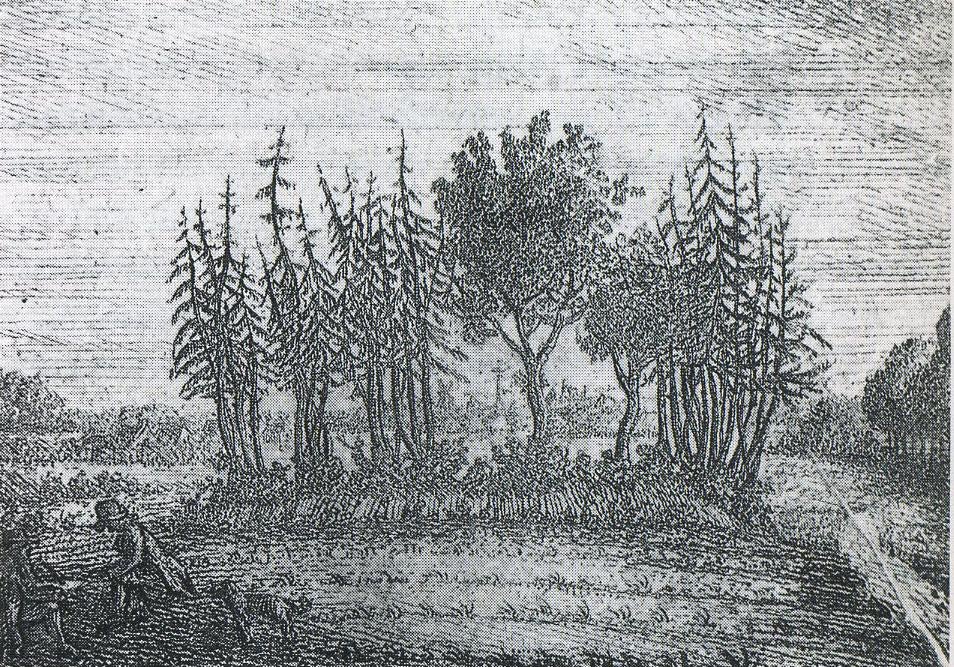
The absence of a manorial authority meant that there existed no central administration. In fact, Friesland consisted of a large number of autonomous areas. The various lands often referred to as provinces, were controlled by the residents themselves. It also lacked any central legal or judicial system. In order to provide a systematic legal system, local leaders attempted to agree and apply rules to the entire region of Frisia. Legal and political delegates from various provinces came to meetings at the Opstalboom in Aurich, to judge, to make decisions, and, if necessary, to defend their autonomy. The delegates were elected by their home province at Easter and together were called to a jury. The meetings took place once a year on the Tuesday after Pentecost. Later those meetings were also held in Groningen. Land ownership played the decisive role in this. The extensive possession of the monasteries in particular gave the abbots of the larger monasteries such as Aduard a major role in that administration. The monasteries also played a major role in establishing the law. Originally the abbots still had sufficient moral authority, but their extensive monastic ownership gave them a vested interest. Friesland had no Knighthood. In Friesland, the feudal idea of nobility, which gave the right of control in the country, was deemed incompatible with “Frisian freedom”. The region also had no forced labor. Some “nobles” still had a major influence in the region due to their great land ownership. The right to vote in local matters was based on the ownership of land, in which a person owning one unit of land received the right to have one vote. This meant that men owning large areas of land could cast more votes. Voting men used their influence to choose a mayor from one of the thirty municipalities, who in turn represented all of Friesland. -
Ridderzaal:

In the 13th century Floris IV, Count of Holland bought a piece of land next to a small lake to build a house on. The Ridderzaal, the manorial hall of Floris V, grandson of Floris IV, was built on this estate in the 13th century. Over the centuries, the government buildings developed around this lake and incorporated the Ridderzaal. From the early 17th century, the Ridderzaal became an important trading place for booksellers, as Westminster Hall was in London. In later centuries it served a variety of purposes - as a market hall, a promenade, a drill hall, a public record office, a hospital ward, even the offices of the state lottery. The hall was restored between 1898 and 1904 to serve its present purposes. -
Smeetoren:
Shortly after obtaining city rights in 1122, the construction of defenses around the city began in Utrecht. Initially, a defensive moat was constructed around the city, using the excavated soil to create a city wall on the inside. The Smeettoren was built very early. A foundation stone stated the year of foundation with (translated from Latin ) the following text: "In the year of the Lord 1145, the seventh year of King Conrad and the sixth of Bishop Hartbert, this building was erected by Sheriff Alfer ". Although the brick was only rediscovered in the Netherlands at the end of the 12th century and the earthen city wall of Utrecht was replaced by a city wall from 1225 onwards, the southwestern part of the old city 's fortifications was already finished in tuff. There, at the end of the current Lange Smeestraat, near the defensive moat, was the Smeettoren, which formed a whole with the city wall. The east wall of the tower must have been at least 2.60 meters thick. The Smeettoren, together with the tuff stone from the 12th century Plompetoren , formed one of the first medieval defense towers around the city. The sector of the city defense ( Gildenslag) with the Smeettoren was manned by the guild of smiths who lived in this area. The Blacksmiths Guild St. Eloy also had to take care of the minor maintenance of the tower. The Smeettoren is also called Grote Smeettoren , the Kleine Smeettoren stood a few defense towers further north. -
Wisselbank:
Amsterdamsche Wisselbank, (Exchange Bank of Amsterdam) was an early bank, vouched for by the city of Amsterdam, and established in 1609. It was the first public bank to offer accounts not directly convertible to coins. As such, it can be described as the first true central bank. Unlike the Bank of England, established almost a century later, it neither managed the national currency nor acted as a lending institution (except to the government in emergencies); it was intended to defend coinage standards. The role of the Wisselbank was to correctly estimate the value of coins and thus make debasement less profitable. It occupied a central position in the financial world of its day, providing an effective, efficient, and trusted system for national and international payments, and introduced the first-ever international reserve currency, the bank guilder. The model of the Wisselbank as a state bank was adapted throughout Europe, including the Bank of Sweden (1668) and the Bank of England (1694). David Hume praised the Bank of Amsterdam for its policy of 100 percent specie-backed deposit reserves. The bank’s full-reserve policy relaxed over time as it lent money to finance overseas trade and to support the Dutch economy, but it remained liquid by requiring good collateral on its loans. This changed with the Fourth Anglo-Dutch War when the Dutch East India Company defaulted on large unsecured advances from the bank. Despite several attempts to recapitalize, confidence in the bank never recovered. During the last decade of the Republic of the United Provinces, in 1790, the premium on the bank’s money disappeared, and by the end of the year, it had declared itself insolvent. The City of Amsterdam assumed control of the bank in 1791. The Nederlandsche Bank was established in 1814 and took over money issue duties for the new Kingdom of the Netherlands, while the Wisselbank entered liquidation in 1819.
-
Montelbaanstoren:
The Montelbaanstoren is a tower on the bank of the Oudeschans – a canal in Amsterdam. The original tower was built in 1516 as part of the Walls of Amsterdam for the purpose of defending the city and the harbor. The top half, designed by Hendrick de Keyser, was extended to its current, decorative form in 1606. Since then the tower has been 48m tall. Because the 3rd Duke of Alba proposed incorporating the tower into a castle (the Monte Albano) the tower became known in Dutch as the Monte Albano Toren. Over the years this became garbled to “Montelbaanstoren.” The castle was never built.
Wonder:
-
Middelburg Town Hall:
one of the finest Gothic buildings in the Netherlands. Construction began in 1452 and was supervised by several generations of the Flemish family of architects Keldermans. Construction was completed in 1520, the town hall received a facade with Gothic windows, red-white shutters, smaller turrets and twenty-five statues of Zeeland’s counts and countesses. The building has one main tower, which the Middelburgers call ‘Malle Betje’. This mocking name comes from the fact it used to run behind the town’s other clock tower, the ‘lange Jan’. A meat-auction or ‘meathall’ used to be situated in the building, which had a separate entrance. Whereas the town hall itself is still used for weddings since 2004 its spaces are in use by the University College Roosevelt, the local university.
Unique Building:
Windmill:
- Health: +300 Health on existing structure.
Note: Windmill are constructed similarly like the Mongol Ovoo, but on top of existing structures instead. Can be built over Mills, Mining Camps, Lumber Camp, Docks, Blacksmith, Siege Workshop.
Tulip Fields:
- Health: 300.
Note: Tulip Fields functions exactly like a farm, but instead of Food being gathered, Gold is gathered instead with a -50% gather rate. + Tulip unique resource is generated if a Windmill has been built on top of a mill. Tulip Fields can be harvested by anyone, giving them gold as well. Sales of Tulips on the market decrease the value of gold gathered down to a minimum 1, increasing the gathering rate. (A Villager will spend an equal amount of time harvesting 1 gold from tulip fields at the minimum value, as they do at its max value.)
Unique Units:
Potestaat:
- Health: 130/320/480
- Attack: 9/11/13 Melee (Halberd) +15/+20/+23 vs Heavy +10 vs Siege; 14/16/20 Torch;
- Rate of Fire: 1.55s (Halberd); 2s (Torch)
- Armor: 2/3/4
- Pierce Armor: 2/3/4
- Speed: 1.25 tiles/s
Note: Potestaat is considered a Heavy unit. Has the ability to deploy Recruitment Camp, making the potestaat unable to move or attack, allowing it to recruit any non-siege units. But rendering it vulnerable to Siege and Torch damage instead.
Musketeer:
- Health: 130
- Attack: 37 Ranged (Musket)
- Rate of fire: 2s (Musket);
- Armor: 0
- Pierce Armor: 0
- Speed: 1.38 tiles/s
Note: When using Counter March formation, they will form a type of semi-loose formation, forming individual lines in a square formation. Boosts their firerate, but makes them vulnerable to melee and especially cavalry charges.
East Indiaman:
- Health: 1400
- Attack: 70 ranged (4 on each side)(Cannon)
- Rate of Fire: 4.3 seconds
- Range: 8 tiles
- Armor: 0
- Pierce Armor: 5 Speed: 1.38 tiles/s
Note: Has an ability to be deployed when on Shallows. Allowing it to produce Infantry units and with an upgrade, Villagers. It can also set home markets and be used as any regular tradeship
Write-up:
The Dutch were one of my most interesting Civ’s at a personal level of research. Because there are many things with the Dutch that have a sense of familiarity to it. And after reading up on it, it all makes perfect sense. As someone who lives in Scandinavia, I have always thought the Dutch language to be eerily similar. In fact, funnily enough, During the early Viking era and pre-Viking age, there was a lot of trade between the Scandinavians and the Dutch people. In fact, their languages used to be mutually intelligible to quite some extent, which also lead to the establishment of a Viking kingdom that spread Norse influences across the territories we now know as the Netherlands. Fun fact for Dutch people, that happen to read danish or Norwegian. Imagine our written language to be almost the same as yours, but with 1 less vowel spelled and wider use of -c and ch instead of k and kj. Examples such as Oostindische = Østindiske, Advocaat = Advokat, Frityrpanne = Frituurpan. Other words that might be spelled completely differently, but They sound similar if not alike, usually means the same thing. Such as: fotball = voetbal, Seilbåt = Zeilboot, sykehus = ziekenhuis
I now understand why Dutch people who move here integrate and learn the language so incredibly fast here, as culturally and linguistically are both quite similar in many ways
Now when it comes to the Civ in the game, I originally intended for it to be 2 separate Civ’s
Friesland, and the Dutch counties (Holland especially, but as well as other major counties that made up the UPN aka United Provinces of the Netherlands) But the more I read into both, the more I started realizing that Friesland and the Frisian people, despite an incredibly long history and strong influences into world-history. They really never manage to become an empire by themselves, perhaps due to the St.Lucia flood that was so catastrophic for the West. Frisians who inhabited the land that has been reclaimed for several generations suddenly got washed away and replaced by the newly formed Zuiderzee. Suddenly, their long-time rival, the County of Holland became a coastal nation with new trade route opportunities and a weakened West-Frisian people that could be easily conquered. Laying the foundation of the Dutch trade empire.But their story is still worth including because they are incredibly interesting, as their rejection of Feudalism, in the time Feudalism, was the dominant way of ruling. And almost an Anarchistic way of self-governance, being completely decentralized, but still united enough to muster a military force strong enough to fight back invaders and even invade others! They were also quite against Nobility especially in form of knights, Requiring the Potestaat (The commander of the united Frisian armies) to be strong enough to Kill a knight. And they would reject knighthood quite often when offered when having served in crusades or as mercenaries. Instead opting for liberties of Frisian land away from hungry empires. And the Frisian Freedom mindset, never really died, and their way of funding and cooperating laid a solid foundation for the Dutch empire base on how they funded and managed their empire. The Dutch counties, such as Holland, Utrecht, Zeeland, Groningen, Flemish, and many others became more Feudal and followed the Frankish empire’s way of ruling, and incorporated many elements from their contemporary European neighbors such as the French and HRE. But using their system and connections to these noble houses and royalties of the greater empires and their experience in competing with the powerful Hanseatic League, to establish the foundation of their trade empire, Sparking the beginning of the Dutch golden age making the phenomenon of them suddenly popping up in world history from a backwater poor country caught between the struggle between greater neighboring empires to a Global Empire in a speed not seen again until the modern time of the rise of the “Asian Tigers” Singapore, Japan, Taiwan, Hong Kong
I wanted to try to reflect this in the Civ design, from their early medieval history up to the very beginning of the Dutch empire. While in the timeline of the game, they weren’t really an empire before the very end of “Imperial Age”. They were rather renowned and culturally distinguishable in the region. Despite being under the rule of the French, HRE, and Spanish empires. Part of it maintained its independence, while the other part used its subjugation under greater empires to expand its own influence and power. This is something I wanted to somewhat try to emulate with the Cultural Duality between the Dutch counties and Friesland. While the Counties are more centered around Holland, the Frisians are well, obviously for their namesake. But in the end, it was the merging of these 2 rival cultures, that created the Dutch Empire, which is reflected in the Imperial Age.
And at a personal opinion level, I think the Dutch do play a very important historical role that should be told in AoE4. First of all, early medieval dutch history is very often glanced over. Most people are familiar with the 17th-19th century dutch history, the Dutch Golden age. But very few learn about what led to it. And this is where it is actually important because it tells us the story of how the society we live in today came to be! Much is talked about Colonization by the great empires, the trade routes, inventions, and the many, many great battles. The wonderful architecture, and not to mention the Tulips and wooden clogs. But very few learn the equally important Financial history. As the Dutch pioneered the way modern Finances are run. The very lifeblood of modern society. The banking system, Stock market, Loans, and Credits. And how to start a Megacorporation, but as well as a clear warning of what happens if you let, well if you let Megacorporations run wild. Everything is the cornerstone of Modern society today. All this developed in the first few years of what was known as the Dutch Republic
Next up: A noble Attempt in Mesoamerican civs
If you enjoyed this and are interested in reading my other Civilization concept here is a list:
Southeast Asia:
The Majapahit Empire
The Dai Viet Dynasties
The Burmese Empire
The Champa Kingdoms
The Thai Kingdoms
The Khmer Empire
East Asia:
The Korean Dynasty
The Japanese Shogunate
Europe:
The Norse Vikings
The Scottish Kingdoms
The Ottoman Empire
The Spanish Empire
The Portuguese Empire
The Dutch Empire (You are here!)
